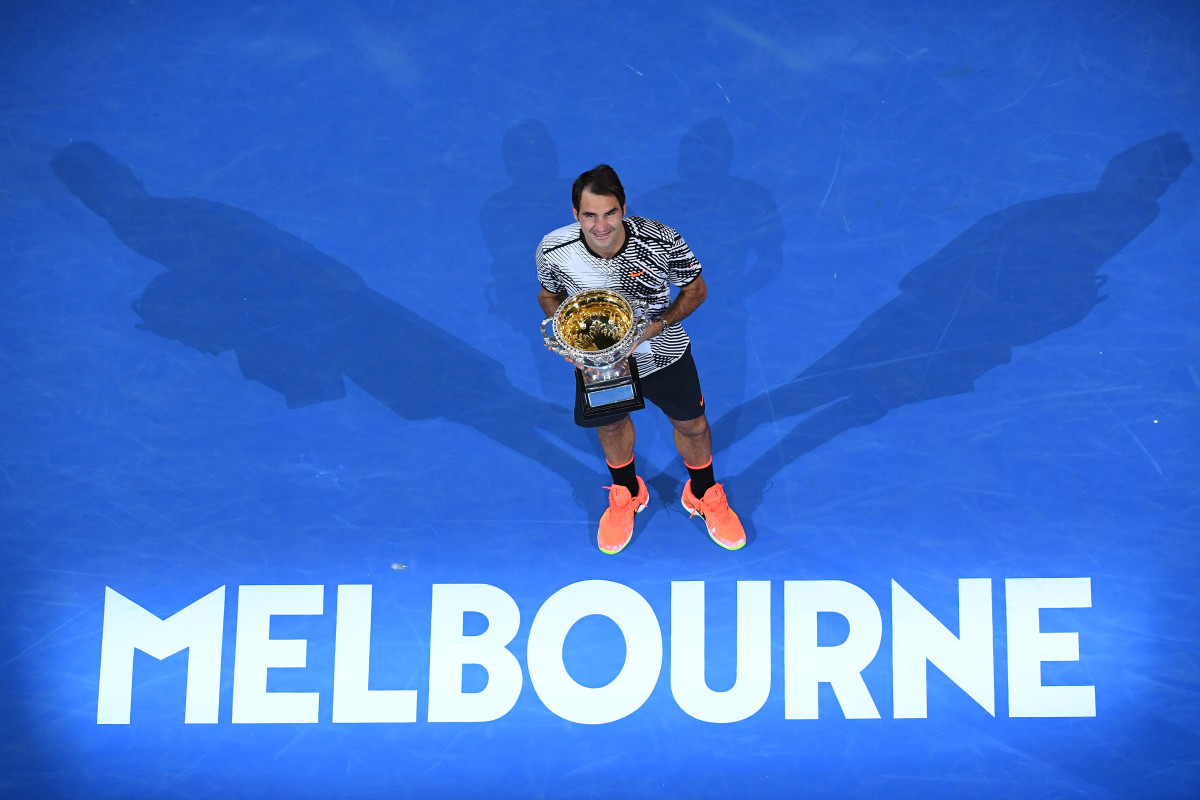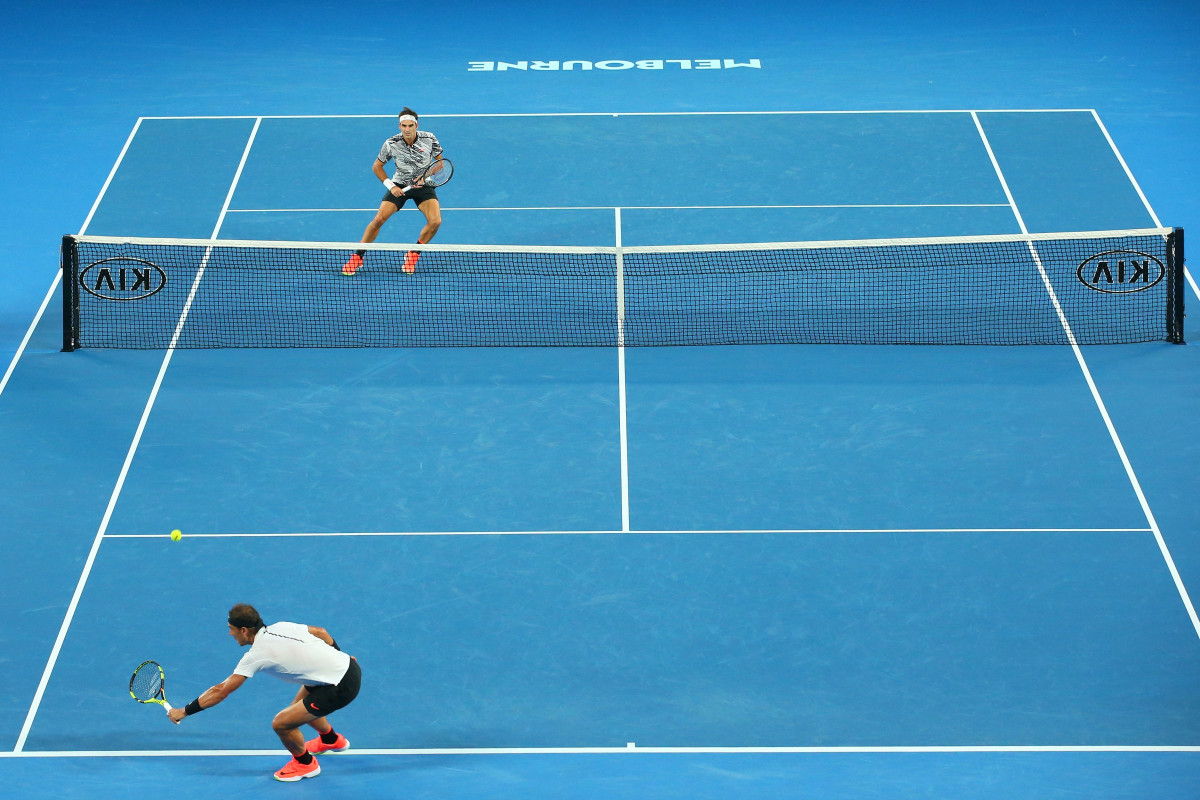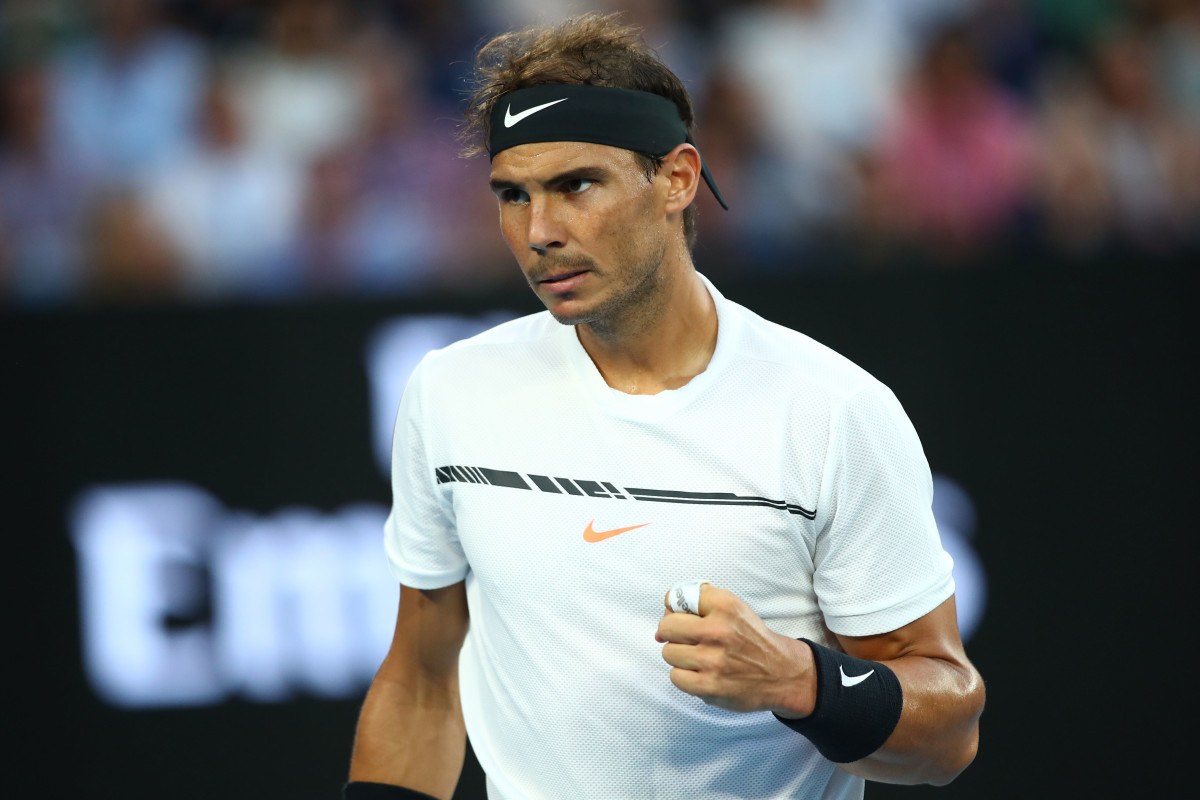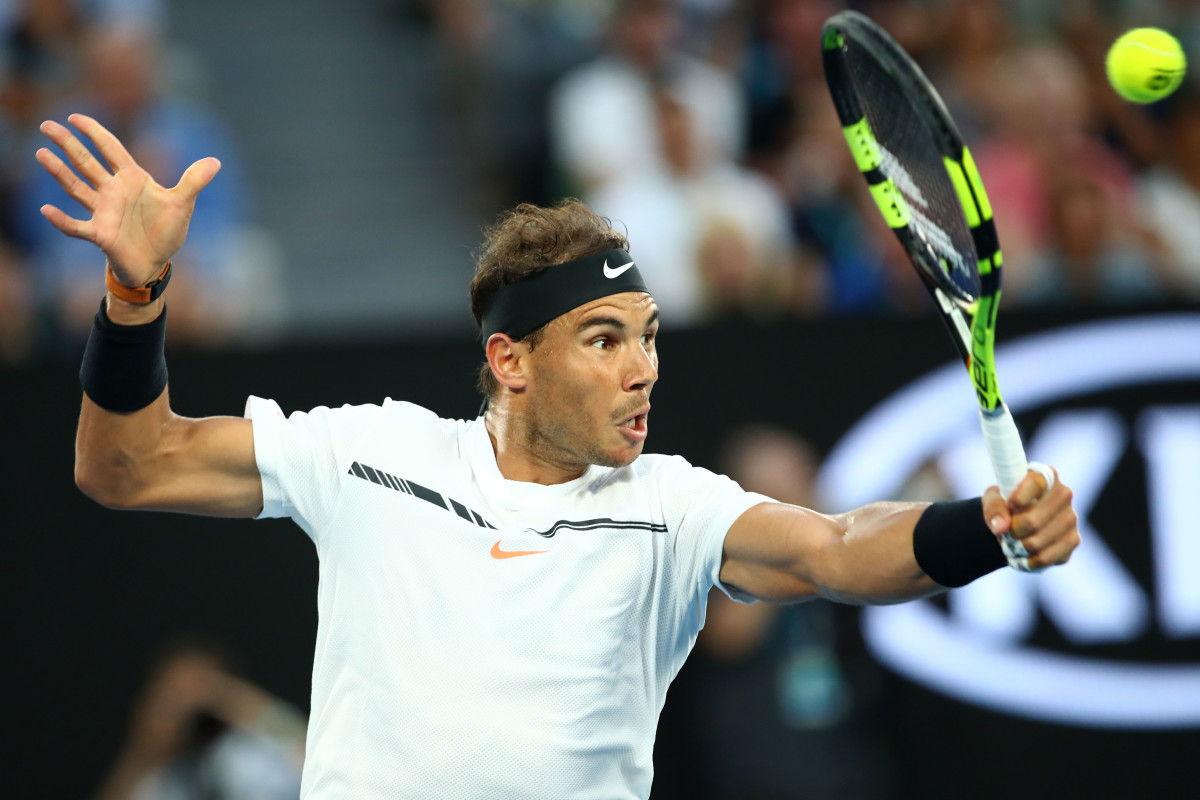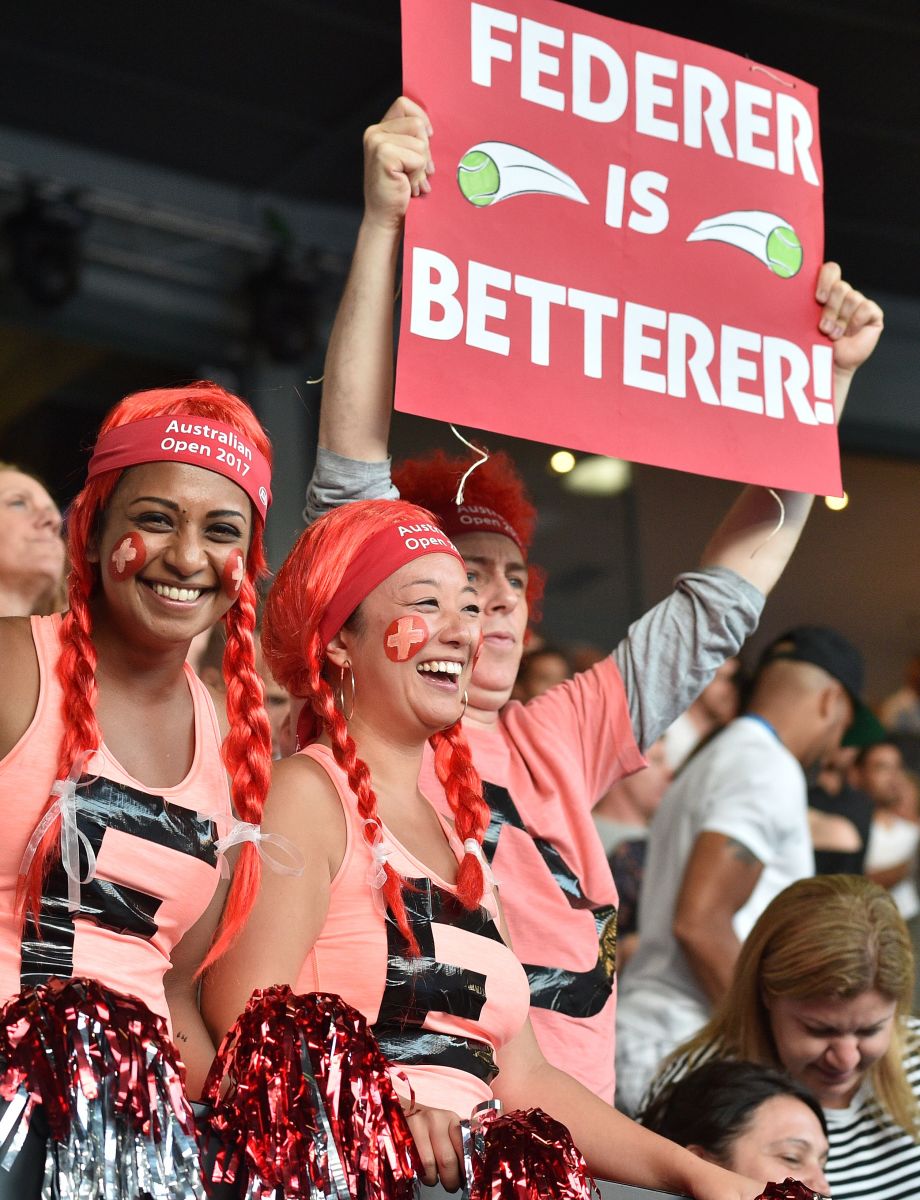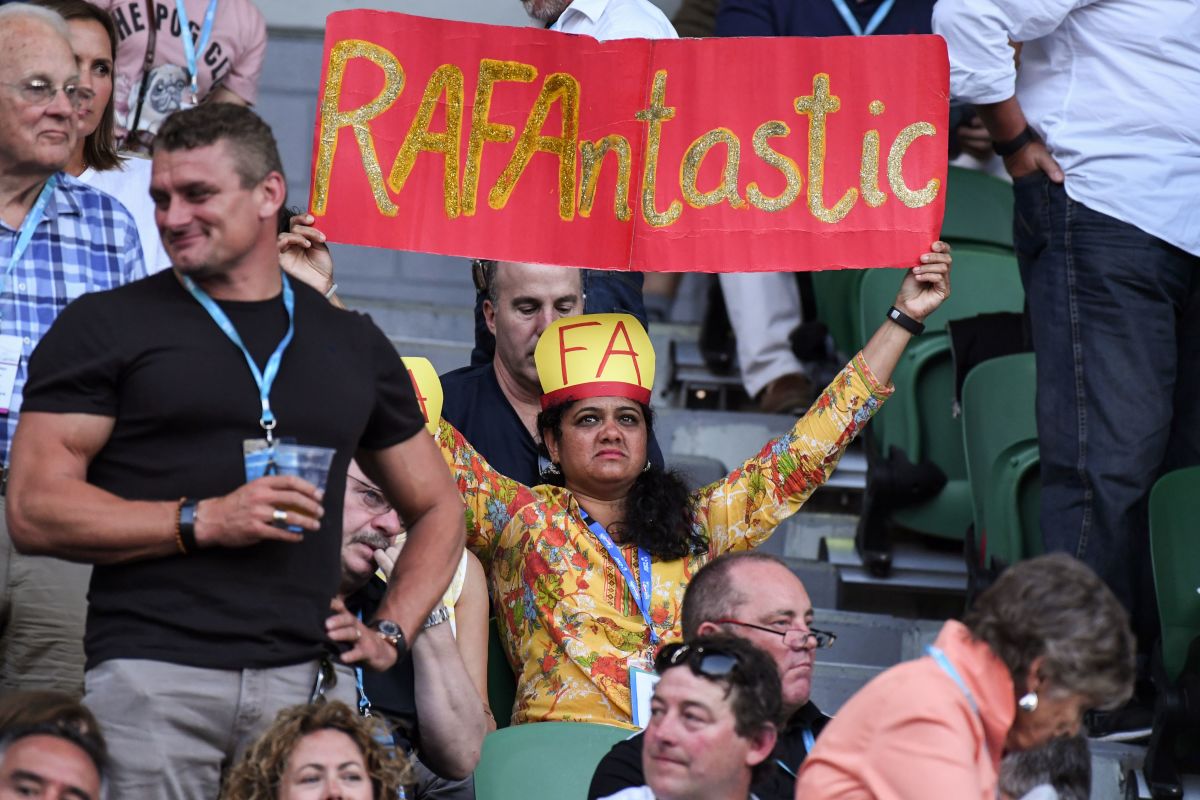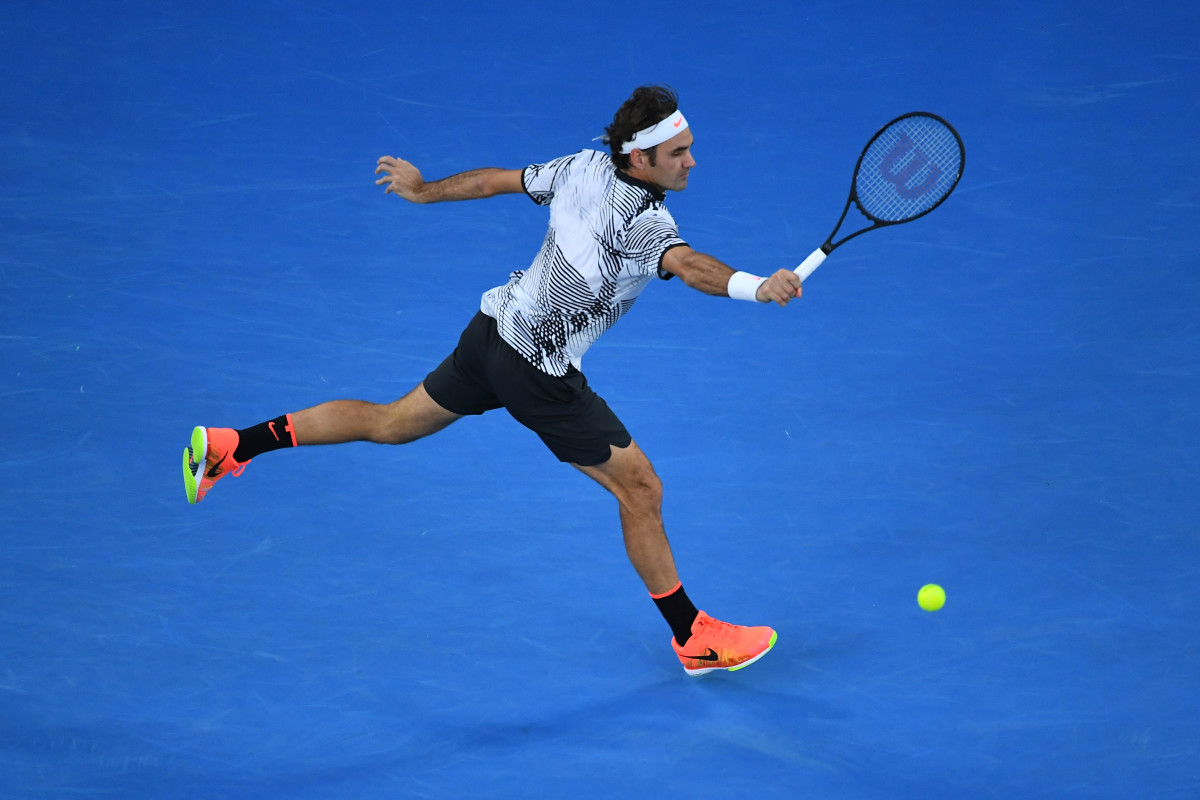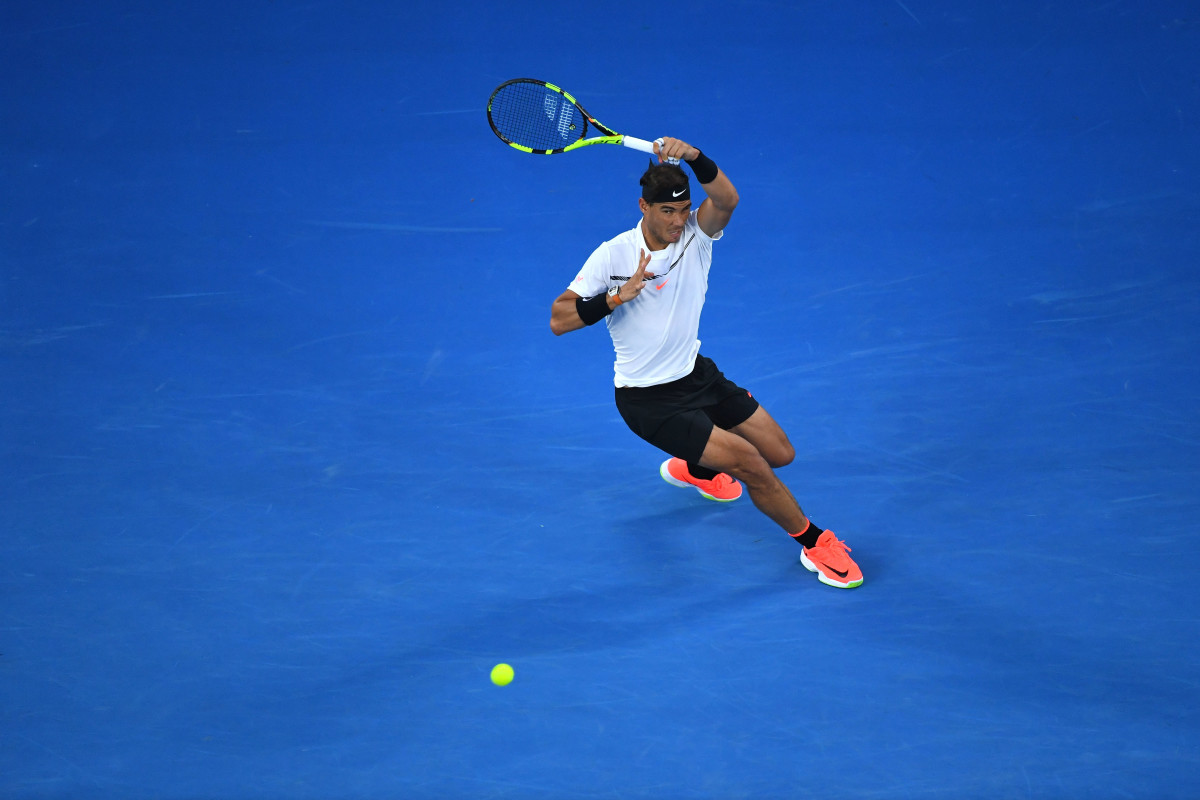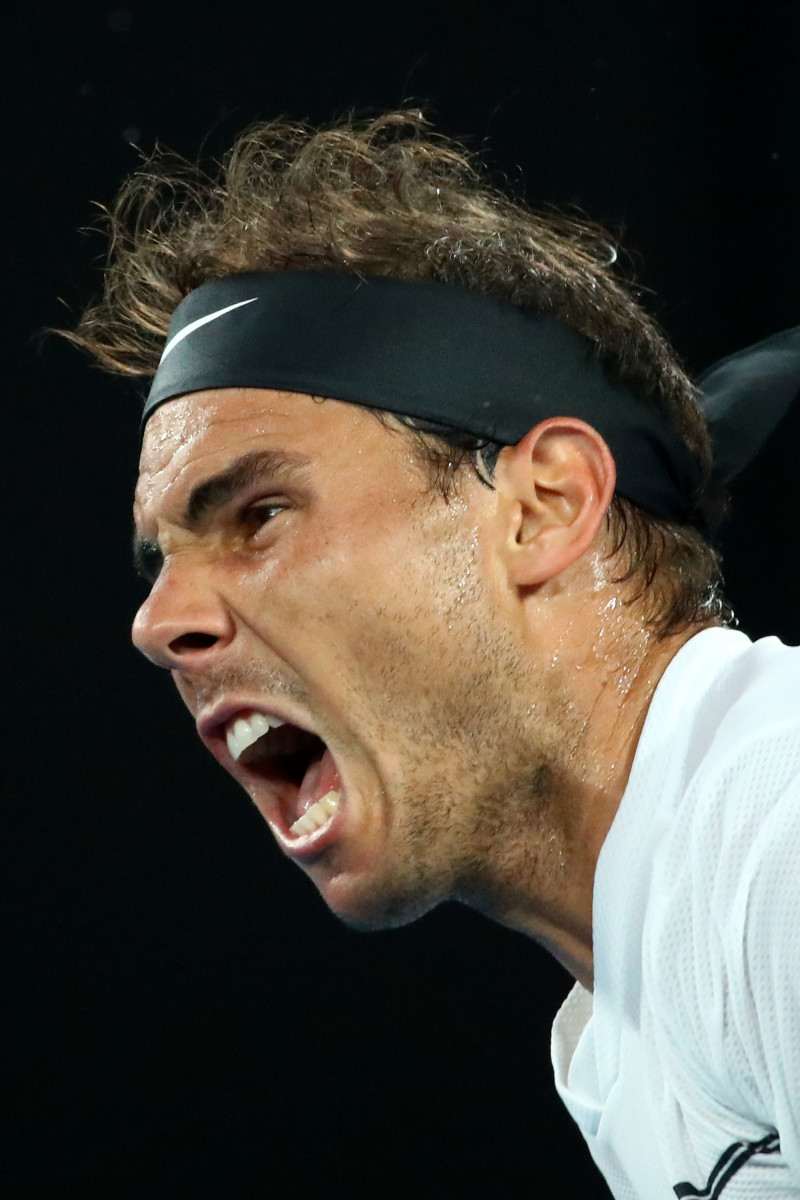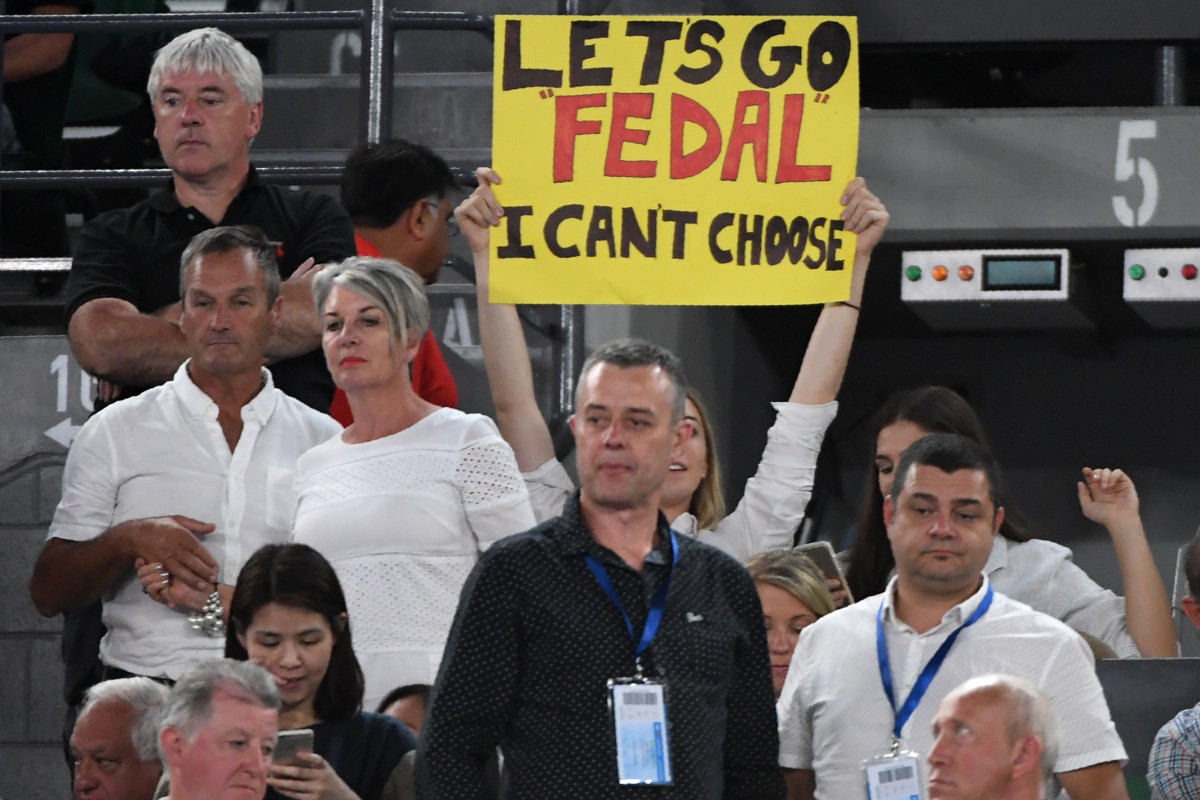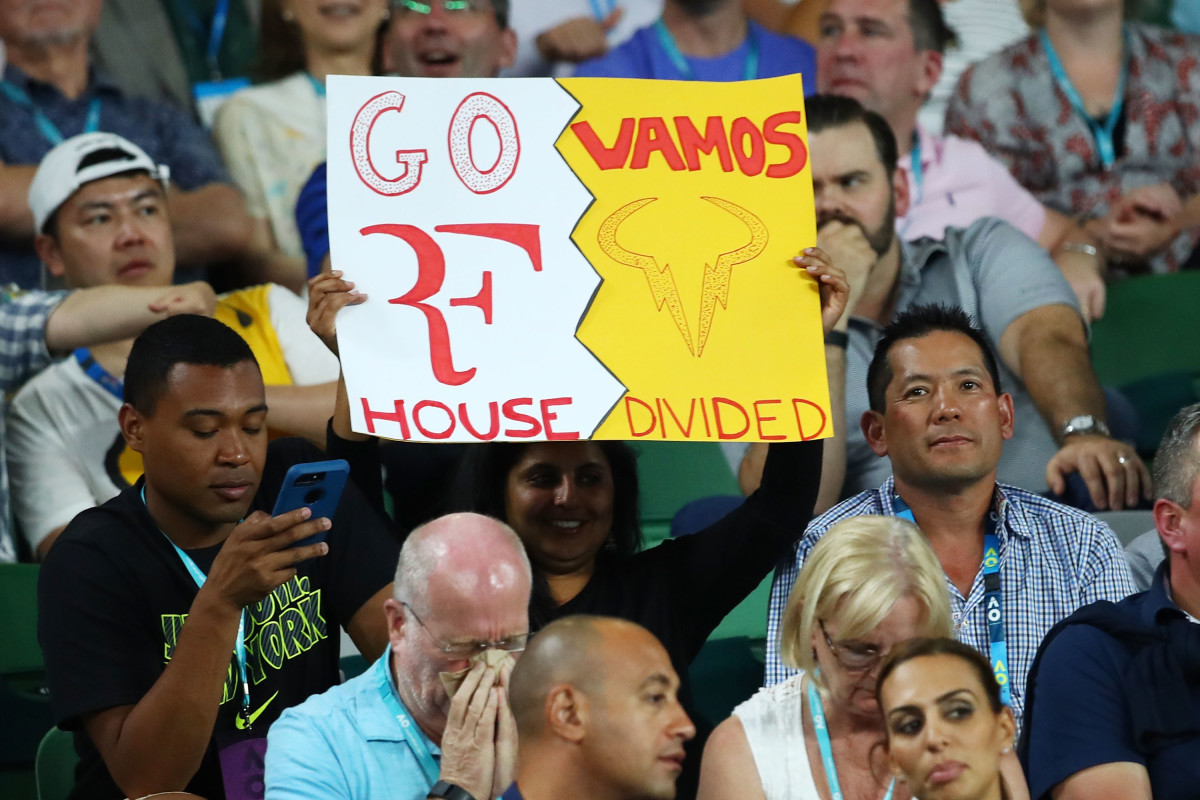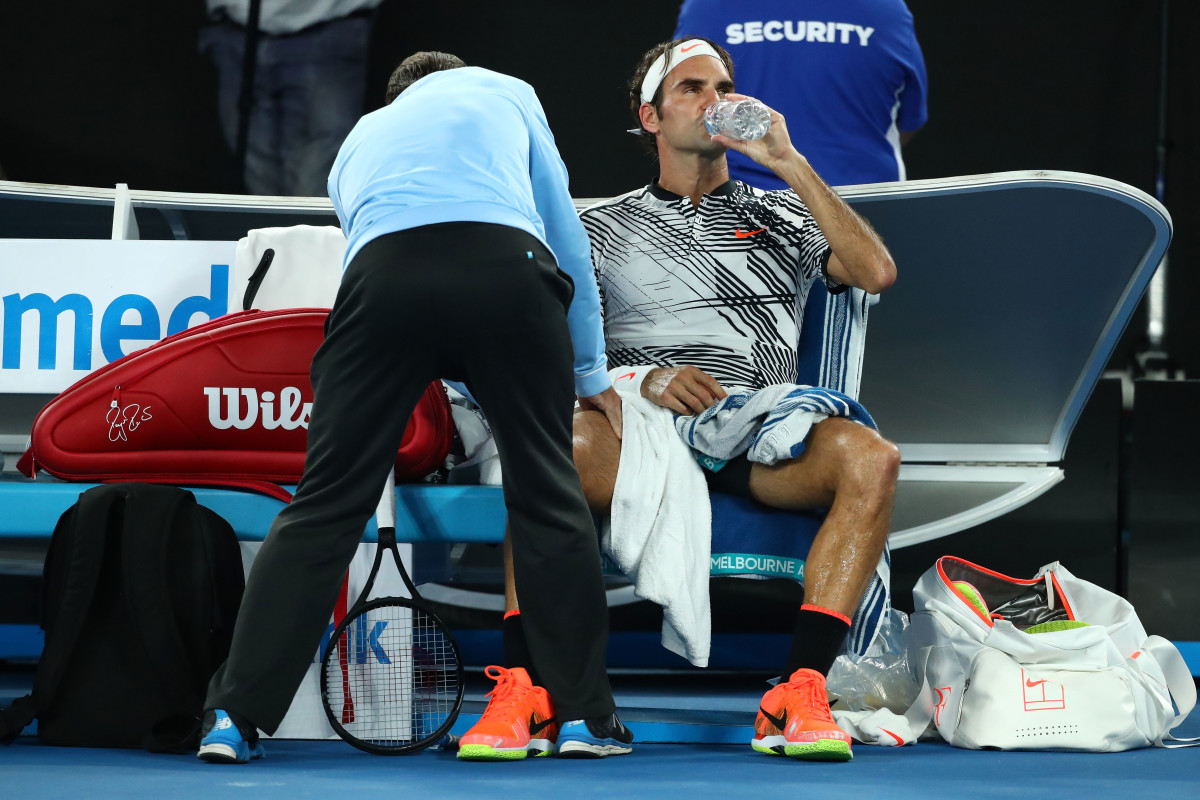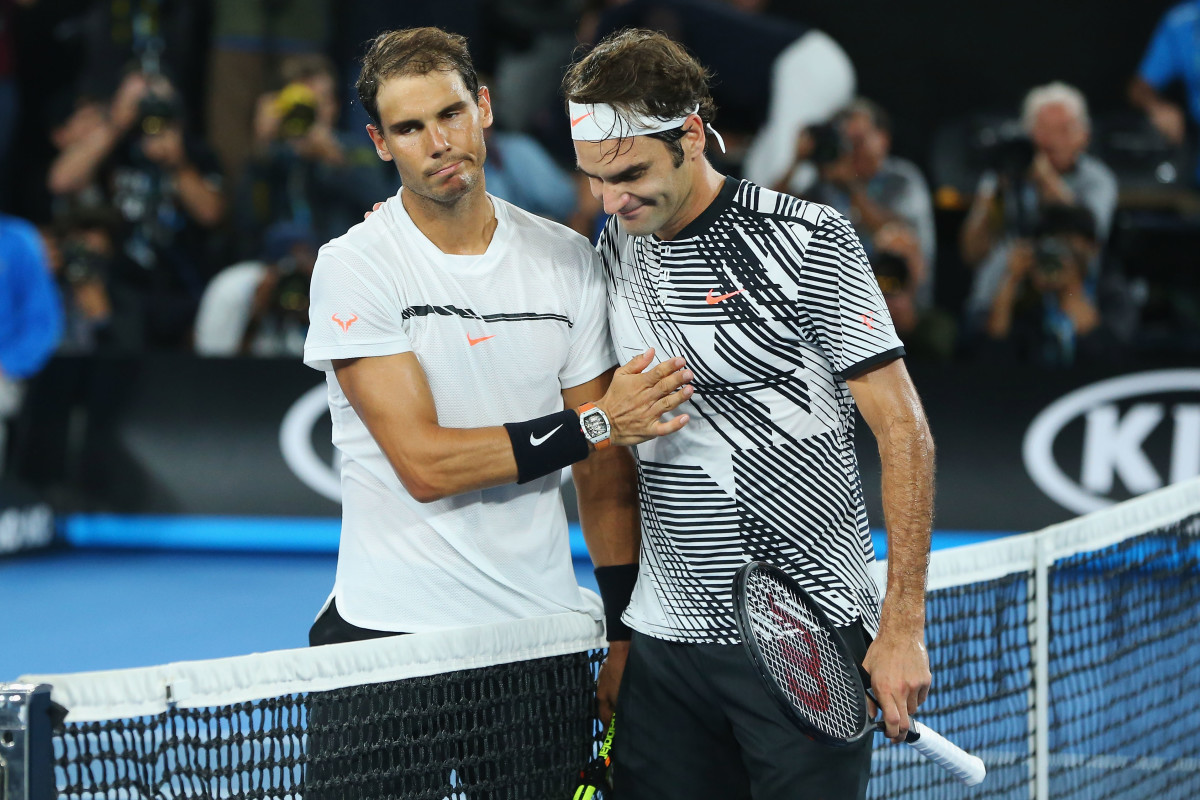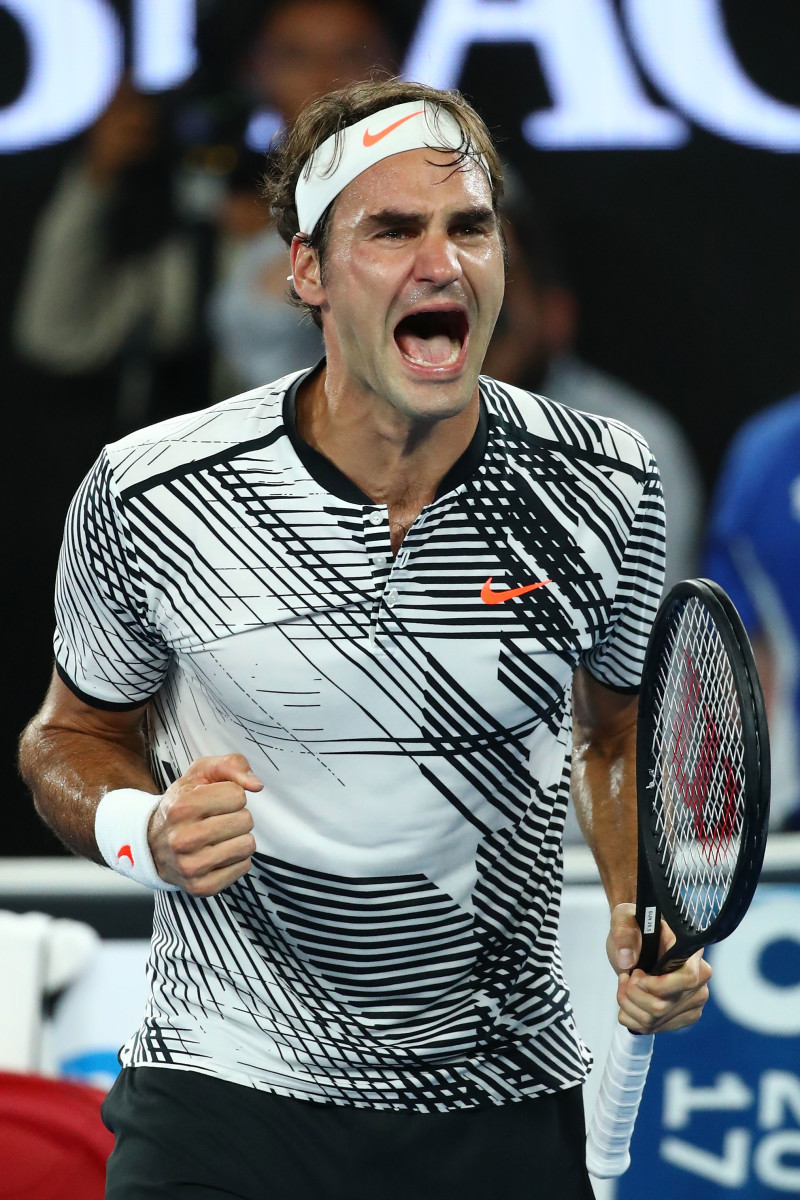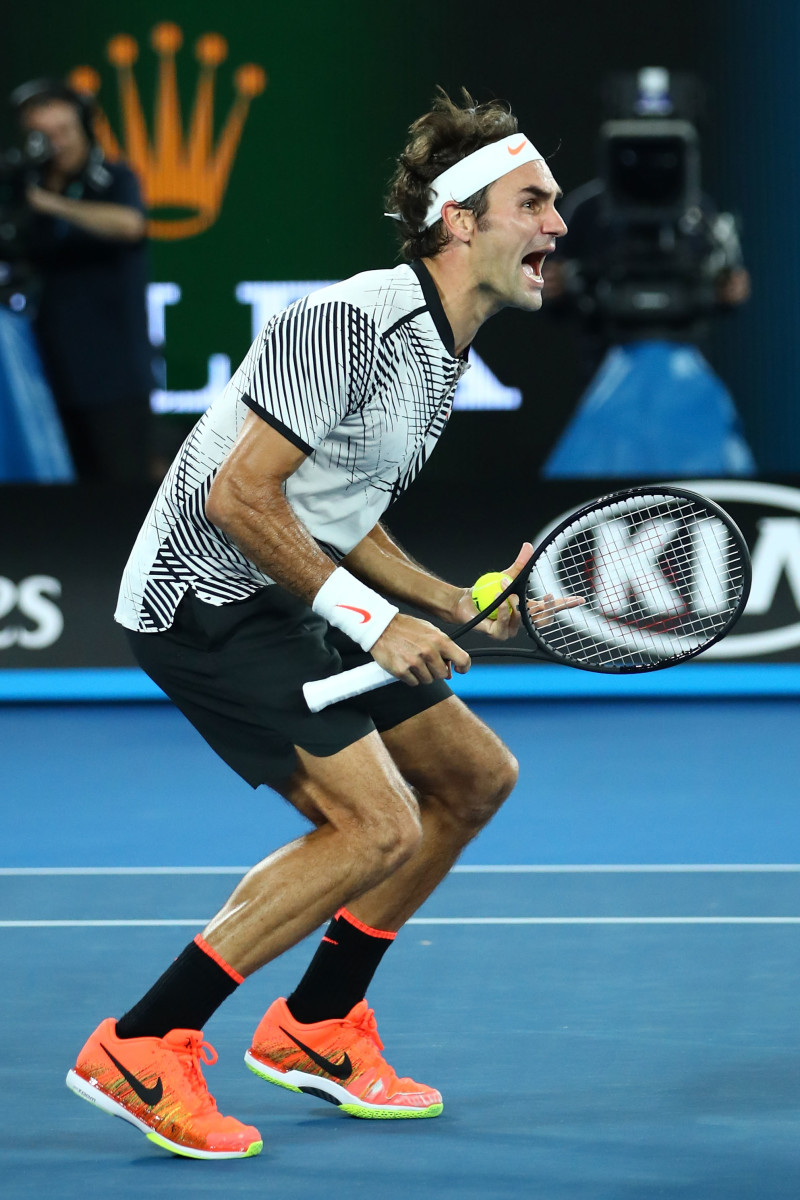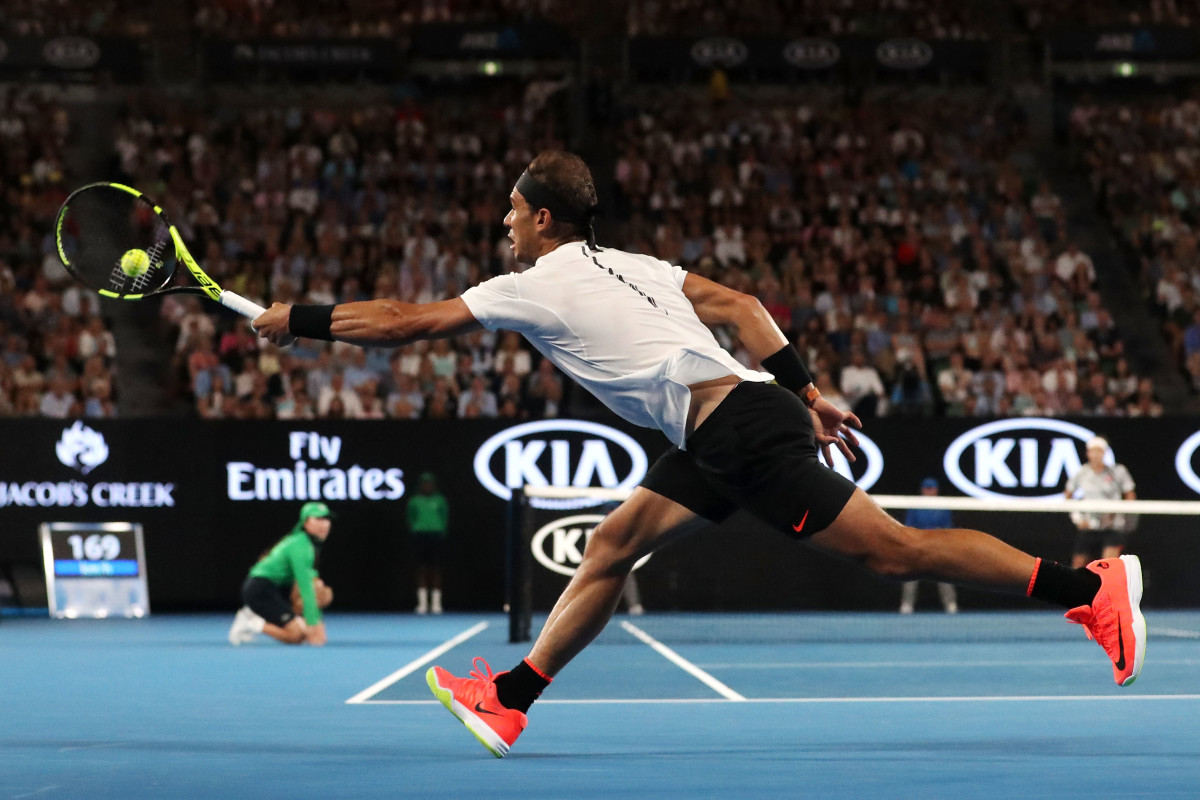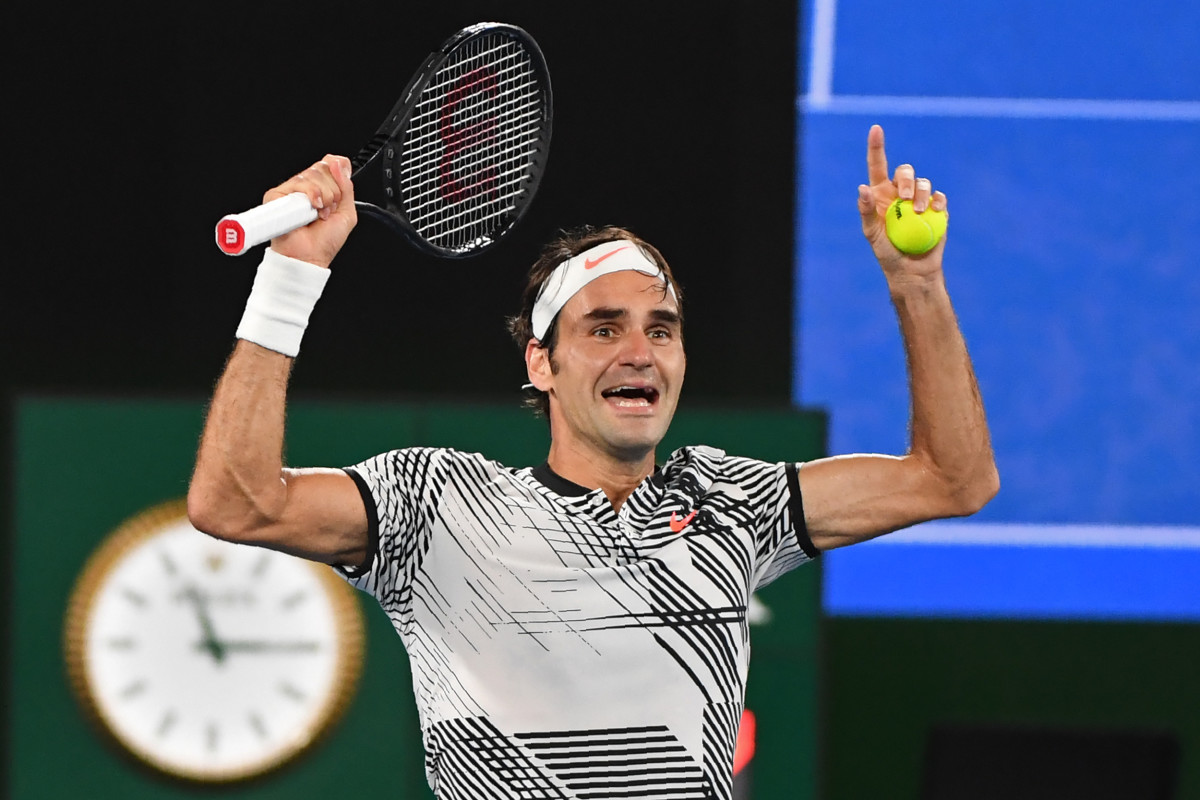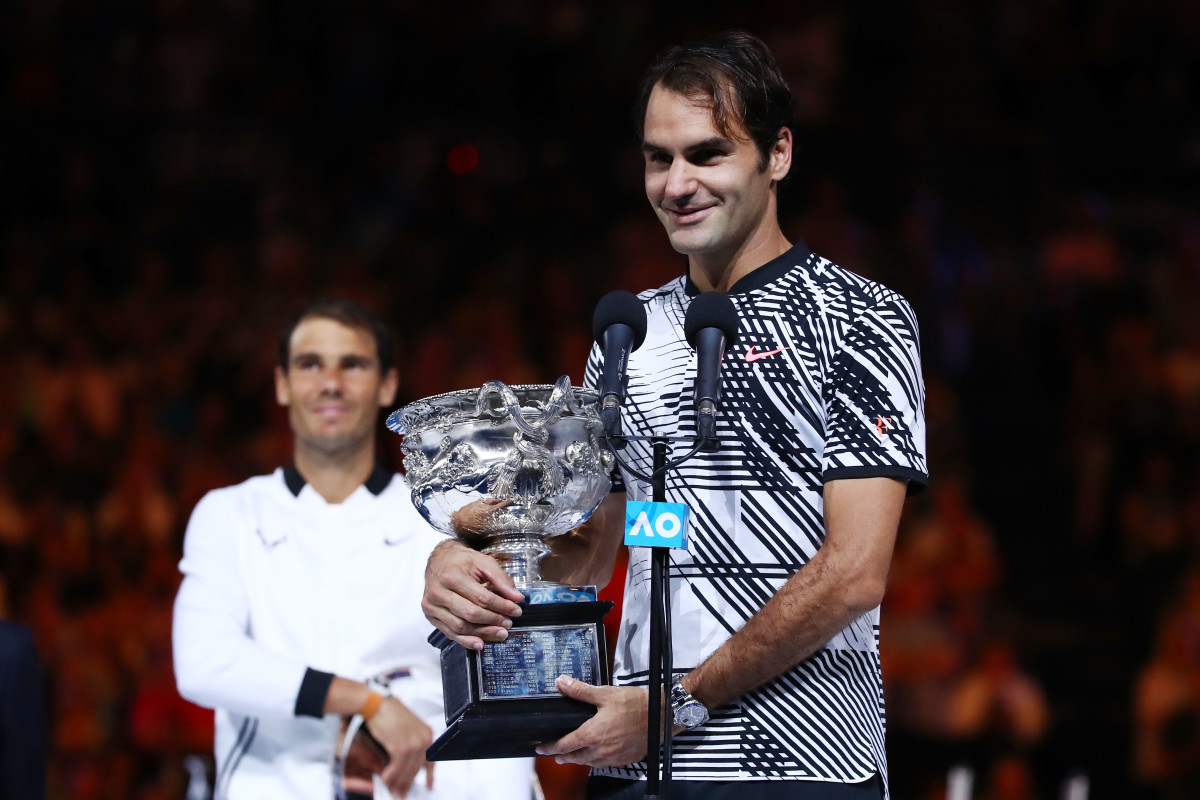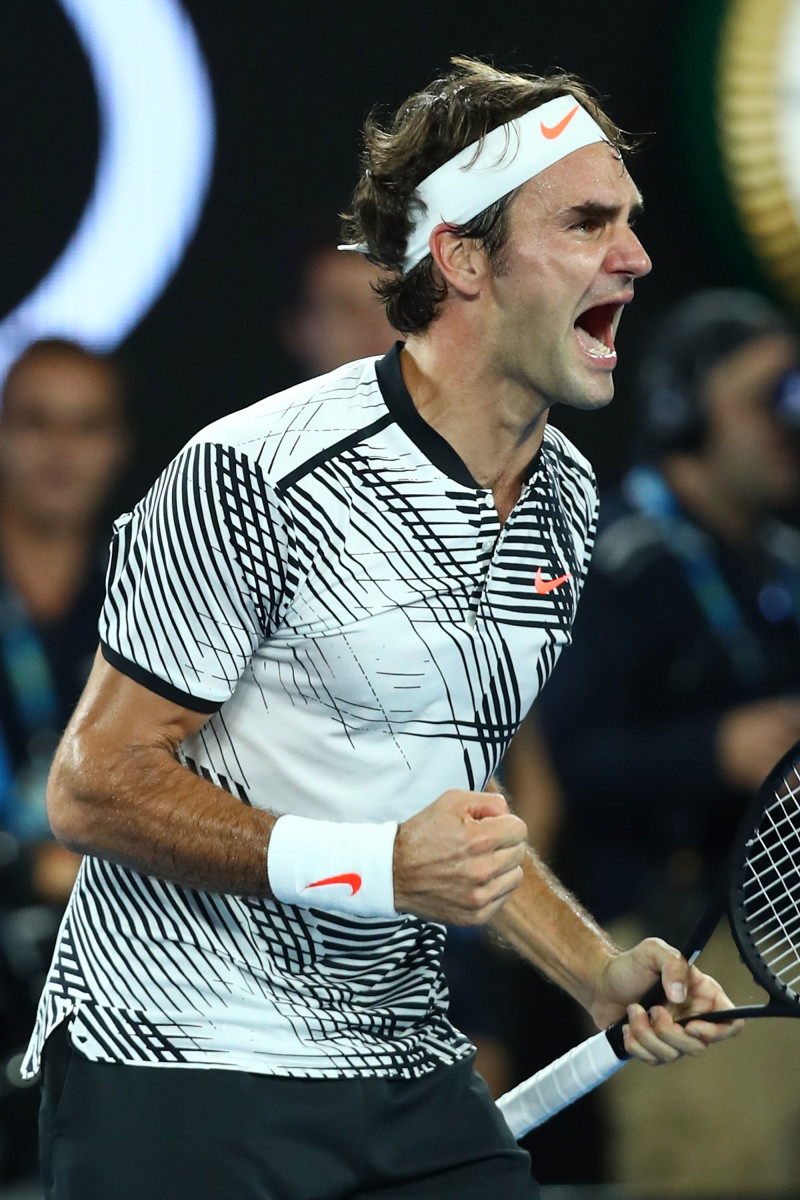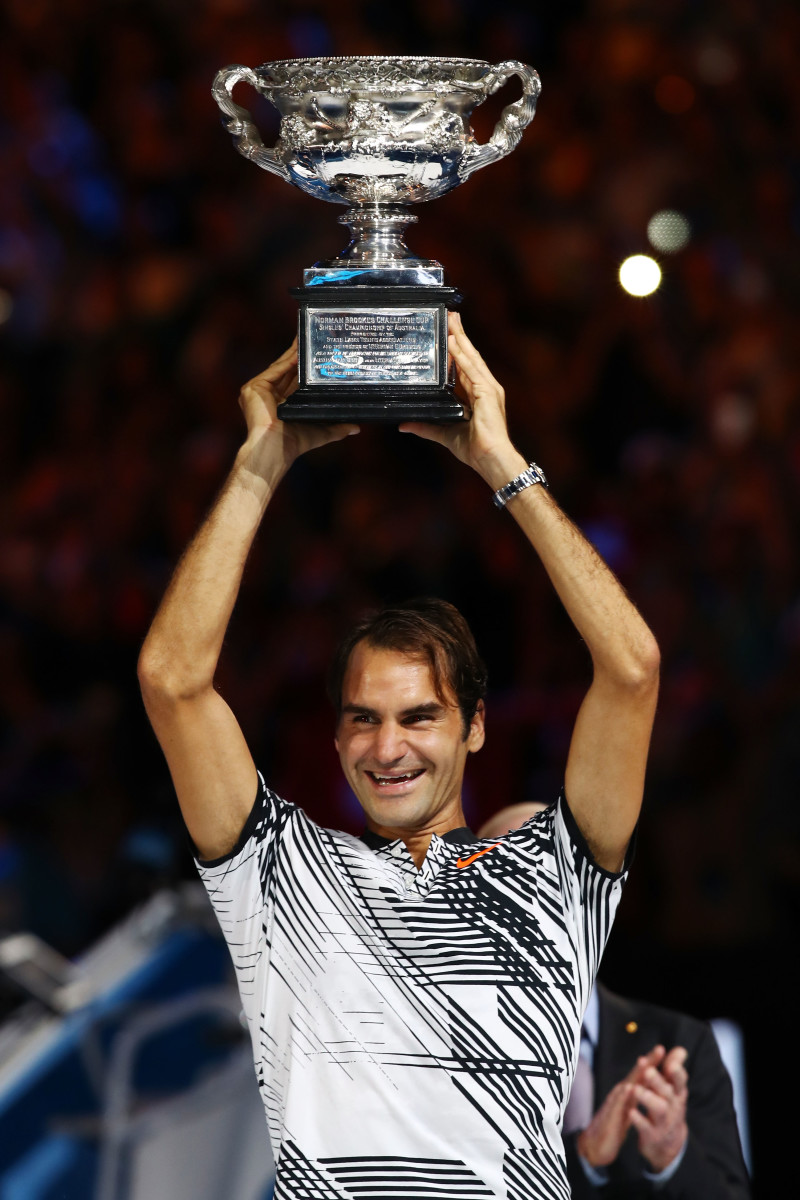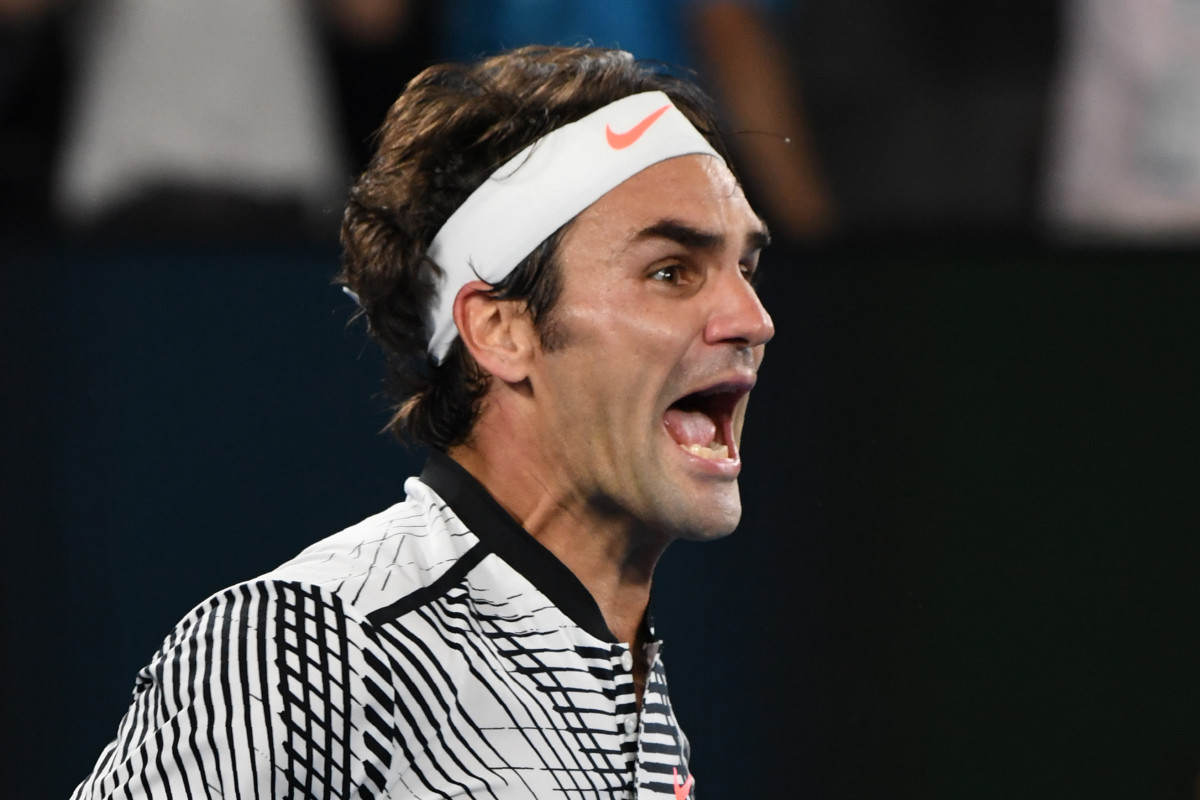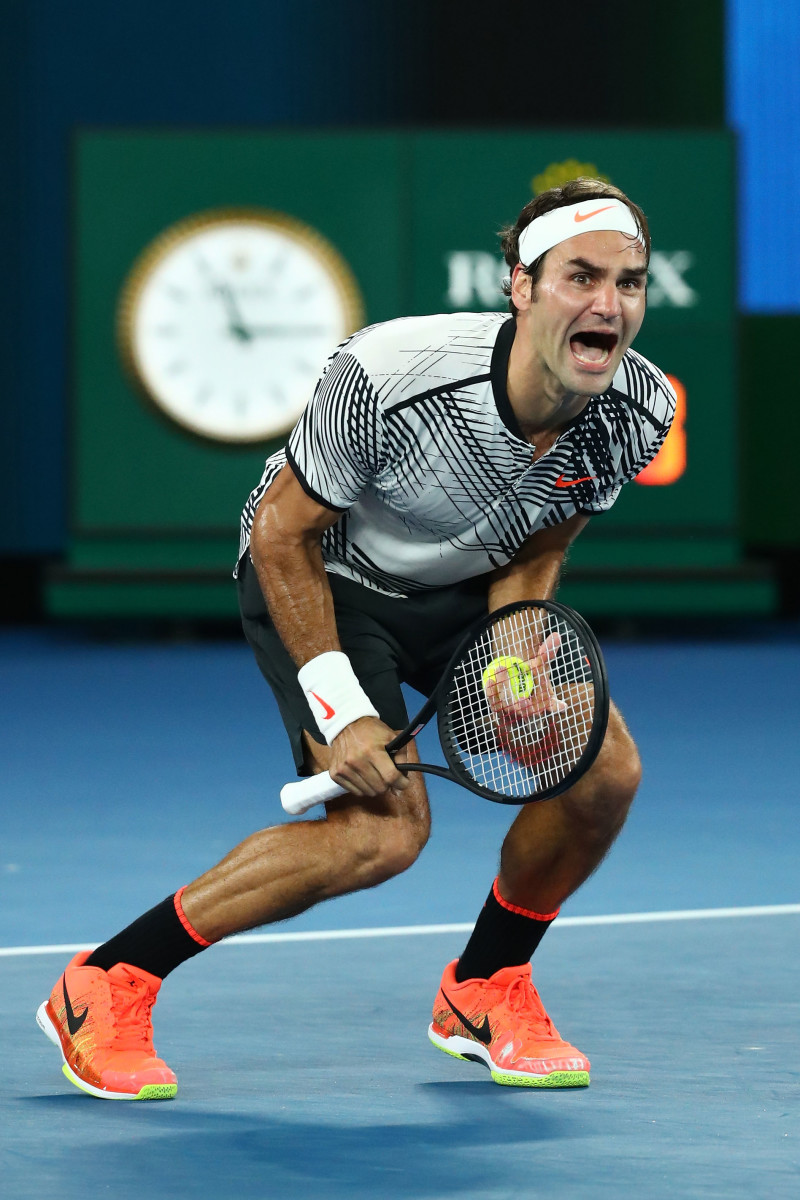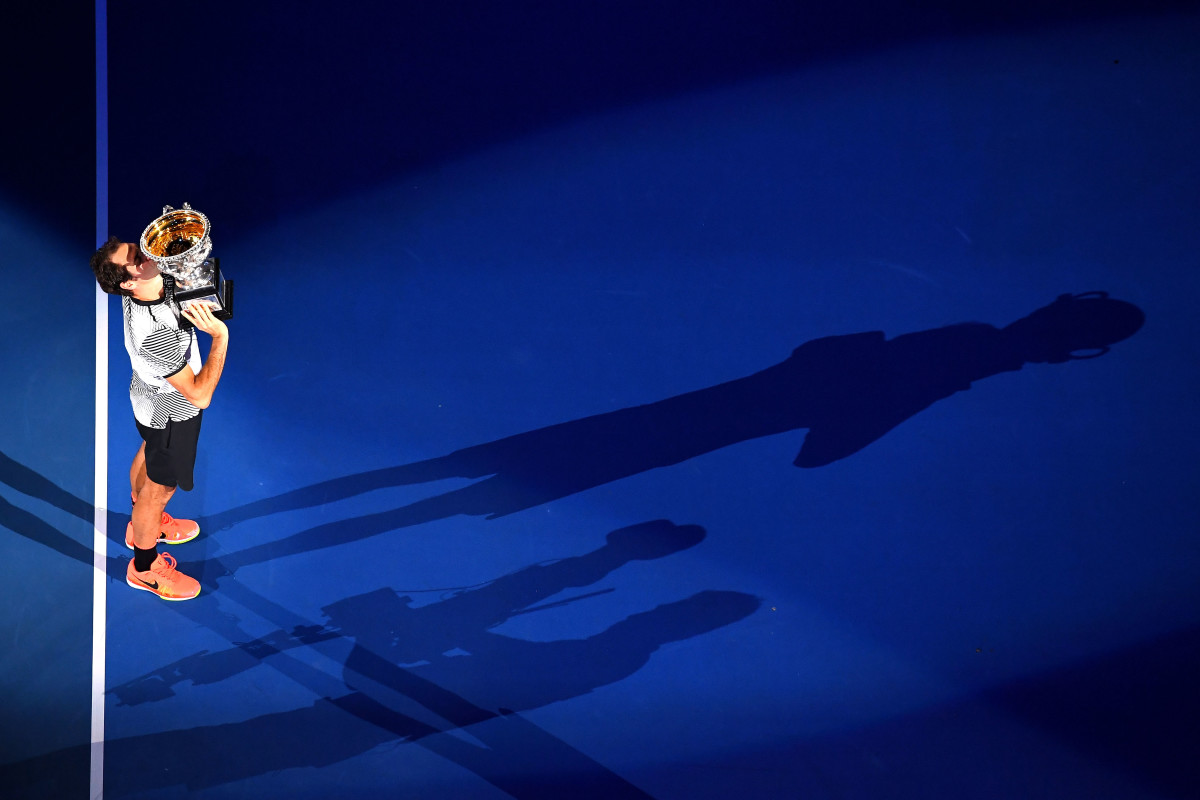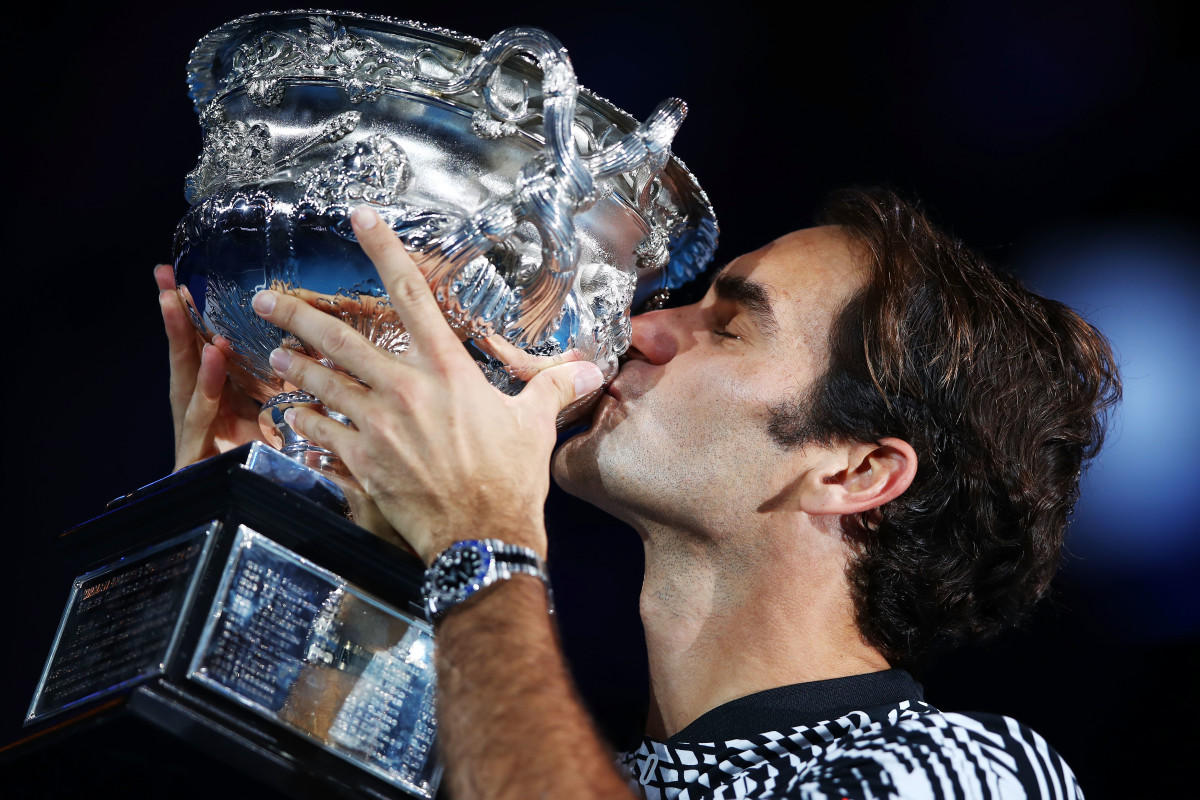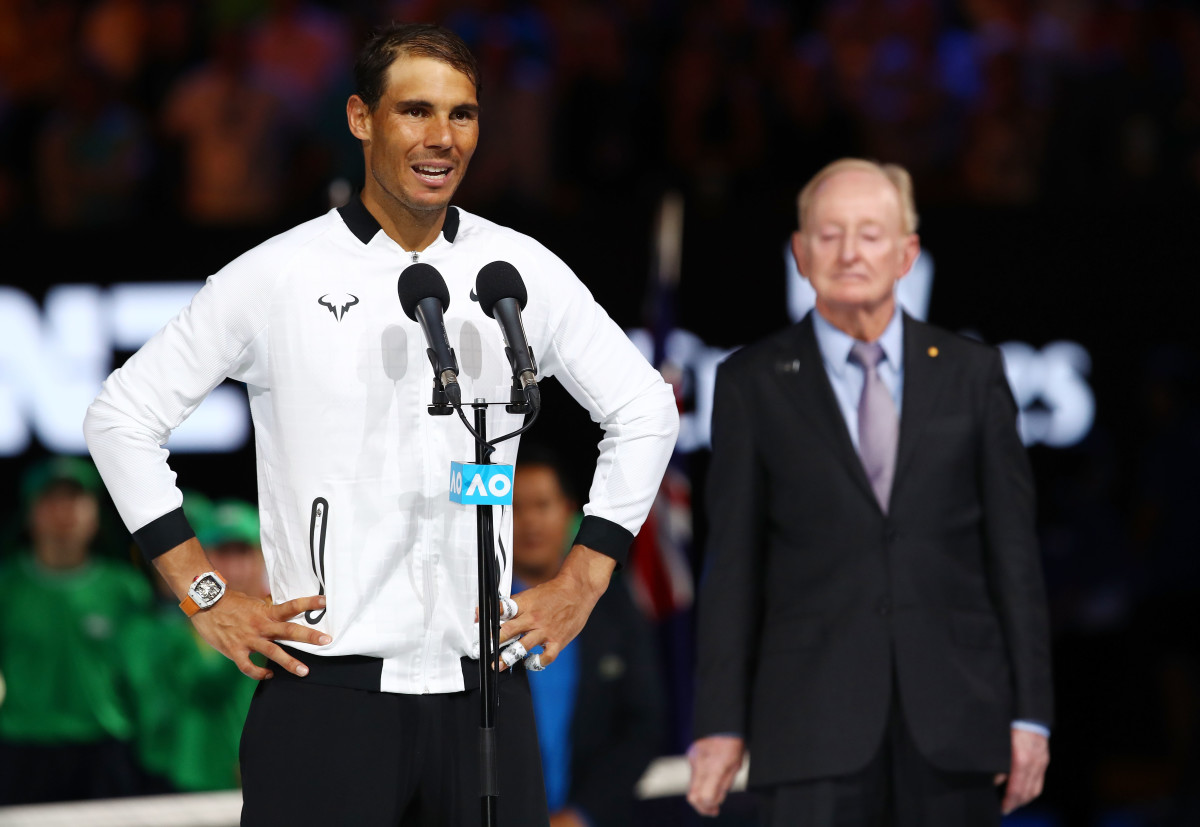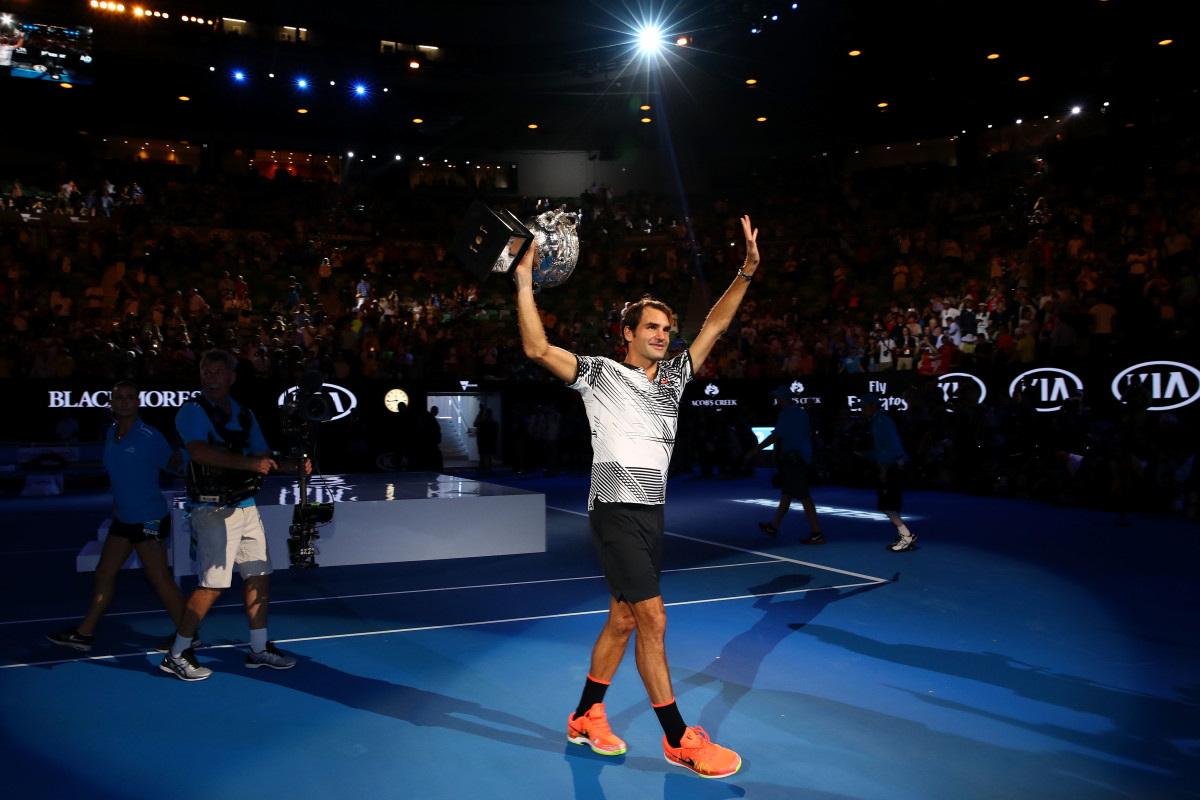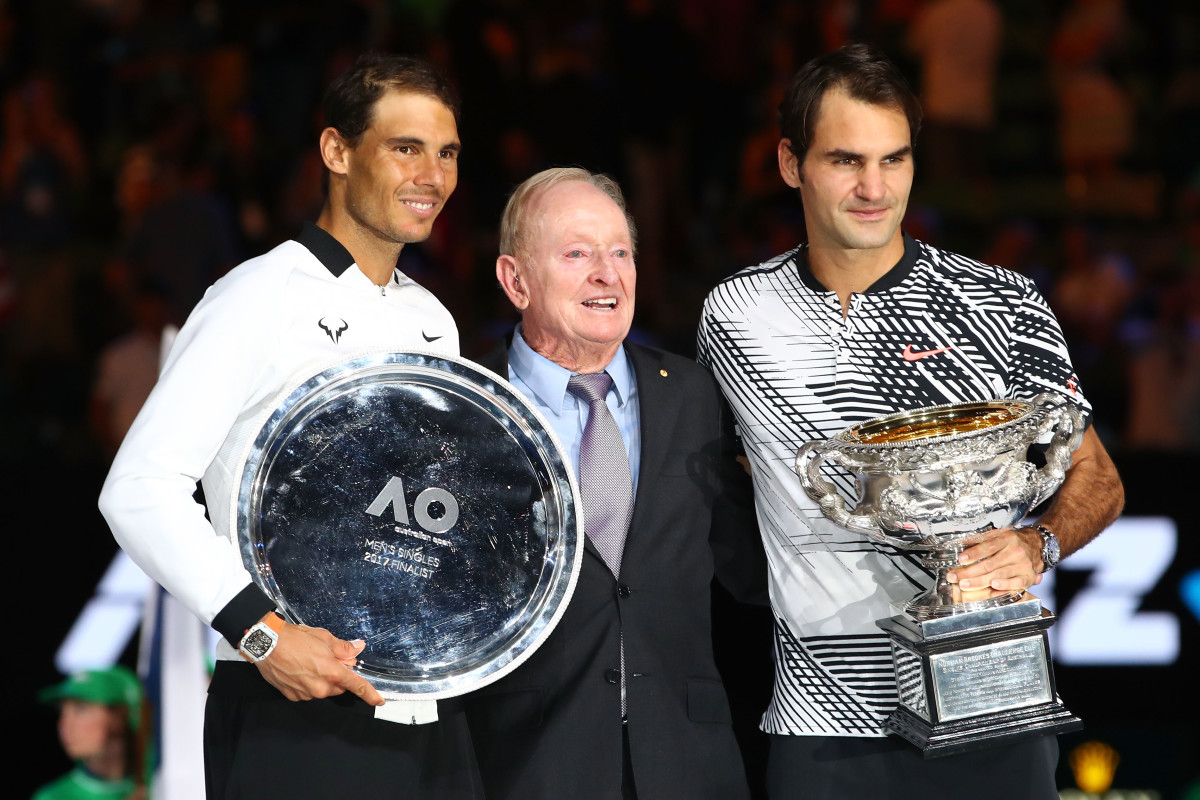Thunder down under: Federer bests Nadal to win fifth Australian Open, 18th major title

MELBOURNE – Five quick thoughts after Roger Federer beat Rafael Nadal 6-4, 3-6, 6-1, 3-6, 6-3 to win the 2017 Australian Open men’s singles title, the 18th major of his career.
• Like fighters leaving the locker rooms for an assignation of combat, Roger Federer and Rafael Nadal took the court to “walk out” music tonight. Roger Federer chose AC/DC’s “Thunderstruck.” Rafael Nadal chose Calvin Harris’ chirping “You Are the One Thing in My Way.”
Who knew each had such a thing for symbolism?
As it happened: Roger Federer beats Rafael Nadal in epic, five-set Australian Open final
Federer was the Thunder down Under, both tonight and for the entire tournament. Taking advantage of a fast court, taking advantage of some draw breaks (see the upsets of Murray and Djokovic) he played his usual lavish tennis and added some real weapon-ized power. On Sunday night, apart from serving better, he smote 20 winners to Nadal’s four. And down a break in the fifth set, he thundered back from a 1-3 deficit to win the last five games. After a six-month layoff, at age 35, he's back with his 18th major, his first since 2012.
In the case of Nadal, an in-form and motivated Federer was indeed the one figure in his way, preventing him from winning his second title. Nadal was clearly tired—knackered in the local locution—from his semifinal. He played well in parts and fought back courageously, holding a break of serve early in the fifth set. But he was far below his usual transcendent level. And on a fast court, with Federer summoning the magic, he could not close.
• “Nadal presents a brutal match-up for Federer.” It’s a dead horse worthy of the glue factory. We’ve been saying this since 2004, when Nadal, then 17, beat Federer in Miami in their first ATP match-up. That loopy, side-winding, impossible-to-simulate high-bouncing lefty forehand is a brutal shot against a one-handed backhand. Tonight, Federer largely neutralized that by playing inside the court, taking advantage of the court speed and getting offensive from the first ball in the rally. In a weird bit of role reversal, it was Nadal whose backhand was picked apart and who gave himself smaller and smaller margins as the match wore on.
But really this was as much about mental strength as it was X’s and O’s. We’ve seen so many of these matches played evenly for an hour or so and then Nadal infuriates Federer. (In any uncommonly candid moment, Federer admitted recently that his mental wounds from the 2008 French Open final inhabited his head during the 2008 Wimbledon final.) Tonight, Federer did not capitulate, did not give the how-do-I-beat-this-guy? look. After breaking Nadal in the fifth set and closing, he wins big, a victory for positive thinking.
Twitter goes wild after Roger Federer wins 2017 Australian Open
• Nadal will be gracious in defeat. He always is. But you wonder what he’s truly thinking. After 30 months without so much as reaching a Grand Slam semi, after taking the fall off, unsure of his long-term future, he must be thrilled about his Melbourne campaign. He’s back to playing top tier tennis and competing for majors. (And the next one is in Paris—and the defending champ is still beset by a personal crisis.) Coming off a five-set win in the semis, he was clearly fatigued. All that said, he will likely reflect on this as an opportunity lost. Against a 35-year-old opponent he had mastered in the past, with a fifth set break? That’s tough….
• Federer will be gracious in victory. He always is. But you wonder what he’s truly thinking. After taking off the second half of 2016, unsure of his long-term future, he must be thrilled about his Melbourne campaign. He’s back to playing top tier tennis and competing for majors. Overall, his body held up in these best-of-five matches. He’s back in the top ten. This is no farewell tour; he is a contender. Down 1-3 in the fifth set against his nemesis—fully aware of the historical significance—he scored perhaps the most meaningful win of his career.
• The obligatory GOAT status update.
This was, of course, Fed-Nadal Bowl XXXV. But you could—and maybe did—argue that this match had the highest stakes in the GOAT conversation. Federer wins and he not only extends his Slam lead to 18-14 but also makes inroads against the unfavorable head-to-head. And at age 35, he beats Nadal in a major final. Nadal wins and he whittles the Slam gap to 17-15 and continues his head-to-head dominance, accentuating the question, “How is someone the best ever when he’s necessarily the best in his own era?” Federer’s win on Sunday night is momentous for so many reasons. Apart from the above, he has now won majors over a span of 14 years (2003-17) adding “longevity” to his list of assets.
Fifty parting thoughts from the 2017 Australian Open
Federer's momentous win obviously changes the conversation. In the course of one tournament—and one match—the GOAT discussion has really migrated and we’ll see where it goes from here.
For now, though, let’s concentrate on the present. Federer is, at 35, still coming within games of winning Slams. And Nadal is suddenly back, too, a good bet to resume his winning at the French Open. How about we find some common ground (squatters’ rights) and agree that it’s to the sport’s benefit that both Nadal and Federer have re-emerged, that their rivalry remains vital and vibrant, and they are still competing for the biggest prizes.
Snapshots from the final
Australian Open final: Roger Federer vs. Rafael Nadal
